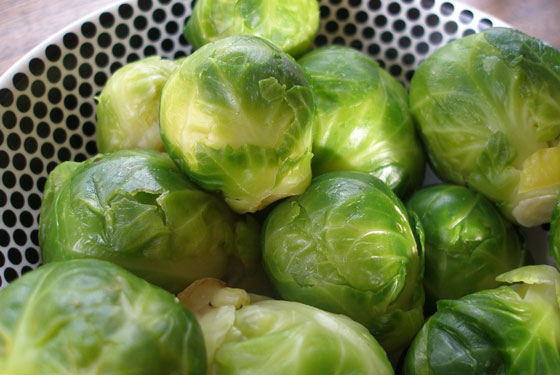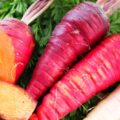
Virgil Evetts
As an impossibly long Indian summer finally retreats, it’s starting to feel a bit like winter ‘round these parts – in that sodden, clammy Auckland way. As we near the equinox the sun seems to only skim the horizon (on the days it shows up at all), and mornings are growing ever cooler. Some might say cold. But as miserable a prospect as winter can be, it does at least soften its doer blow with the promise of richly flavoured, long matured produce. Root vegetables, brassicas, citrus and more.
Lemons
The lemon might just be my favourite fruit. Its uses in the kitchen are legion and its vast, complex aroma can fill a room. It’s hard to not be happy around the fragrance of lemons. To my way of thinking the best variety grown in New Zealand is Yen Ben. Ripening from now until late spring (and sporadically throughout the year), this is the most widely available lemon in New Zealand. Yen Ben are best when firm, glossy and pale yellow. Over-ripe lemons loose their sharp lemony fragrance and clean flavour, instead becoming ruddy and dull. Yen Ben is an almost seedless lemon and full of sour (but not bitter) juice. This is excellent in salad dressing, marinades, desserts or in lemonade. The zest is a wonderful addition to icing, baking and makes the very best limoncello.
Brussels Sprouts
I once wrote an entire article for Foodlovers about my dislike of this vegetable, but shortly thereafter had a complete change of heart. Unlike my soggy childhood impression of the sprout, fresh, new-season specimens can be beautifully sweet, fine textured, and among the most flavoursome of the leafy brassicas. But they do need careful handling. Sprouts want only a short, sharp stay in the steamer (or pot if you must), just enough to heat them through and bring out that startling green hue. For company, they like nothing better than a little butter and nutmeg, a few sage leaves and white pepper, perhaps some bacon or chorizo, and if you’re feeling really fancy, some roughly crumbled chestnuts. Be warned though, an overcooked and fussed over sprout can be a thing of rare horror. Rankly gastric and every bit the stuff of your worst childhood food traumas.
Kwan Mandarin
The very definition of small and perfectly formed, Kwan mandarins are one of the true highlights of winter food parade. With their sharp but rich flavour, seedless flesh and easy peel skin, they’re as convenient as they are delicious. Kwan, are best from around June until late July. During this time they still have a very good acid/sugar balance. The longer the fruit spend on the tree the more this balance swings in favour of the sugar, which I think makes them considerably less interesting. So enjoy while they’re sharp and strident, either as a fresh fruit- out of hand, as they say – or in various desserts and cakes. Try segments tossed in plenty of grenadine and a little shredded mint. Chill and serve with vanilla ice cream.
Wild Duck
Unfortunately you can’t buy these in the supermarket, so if you happen to know any duck hunters, now is the time for serious ingratiation. Wild duck tastes so different to farmed duck that they might as well be different birds. They’re usually smaller and quite a bit leaner than farmed birds, and because they are so active (and of indeterminate age) they can be a bit toothsome. But my God that flavour! The dark, autumnal, almost woodsy tatse of wild duck is quite without peer. To mitigate any toughness, roast in an oven bag or under cover with plenty of carrots and kumara in the bag to absorb those gorgeous sticky juices. I’m not a blood-sports sort of person, but happy to relive others of their spoils…
Swede
A vegetable with a reputation only slightly ahead of Brussels sprouts, and similarly ill-deserved. Swedes, or neeps as they are known in Scotland (and less appealingly ‘rutabaga’ meaning root-bag in the USA), need long, slow cooking to break down their very firm flesh. They can be mashed with plenty of butter, stock, pepper and mustard, cooked in soups and stews, (where they are particularly good company for lamb) or even made into wedges and baked. I’ve enjoyed them alongside carrots, parsnips and duck in a richly spiced tagine too.
Swedes are naturally very sweet, with a mild mustardy flavour and a texture comparable to celeriac. Traditionally, they are considered best for eating after a heavy frost, whereupon they become sweeter and easier to cook. I’m told this can be replicated at home by placing the Swedes in the freezer for a day or two, but am yet to try this out.
Other highlights May/June
Tangerines, oranges, limes, apples (Jazz, Envy, Braeburn, Gala, Red Delicious etc and various heritage varieties), crab apples, quinces, persimmon, tamarillo, carrots (look out for black heritage varieties), pears, nashi, Hass avocados, choko, pumpkin, squash, kumikumi, Jerusalem artichokes, Pilipino drinking coconuts, durian, lychee, longan, Thai mangoes.




Wow, I never thought you’d be won over to the dark side (ie where the brussels sprouts are)! Roasted and also halved and pan-fried with garlic are nice too.